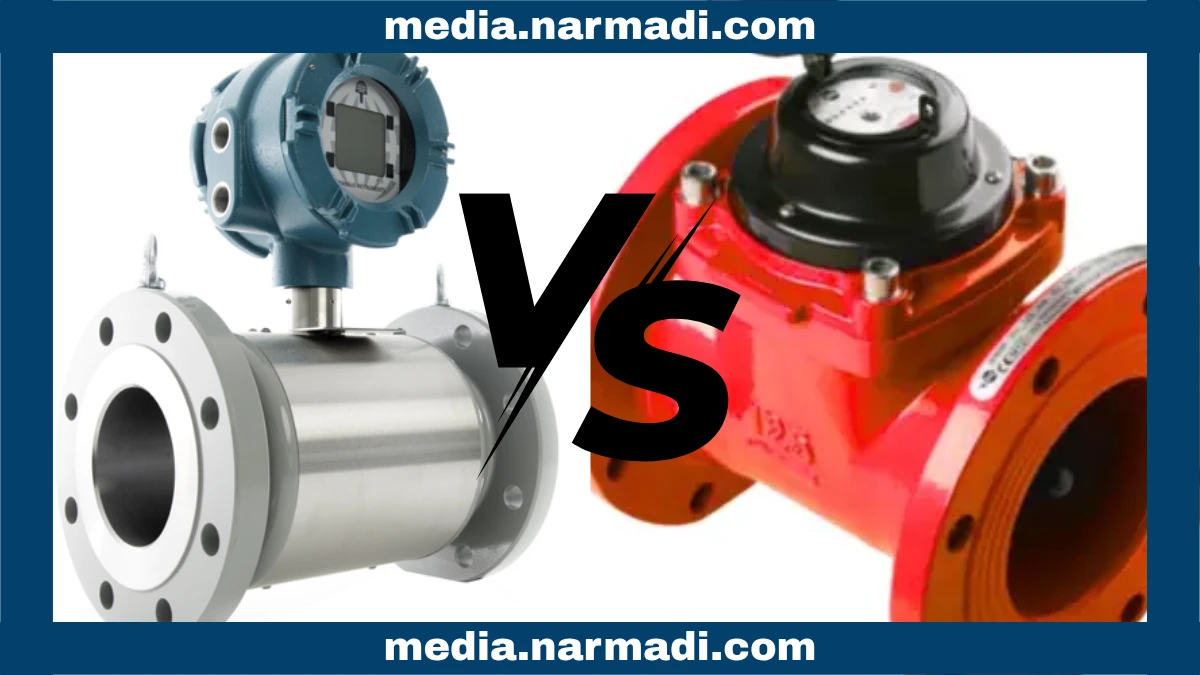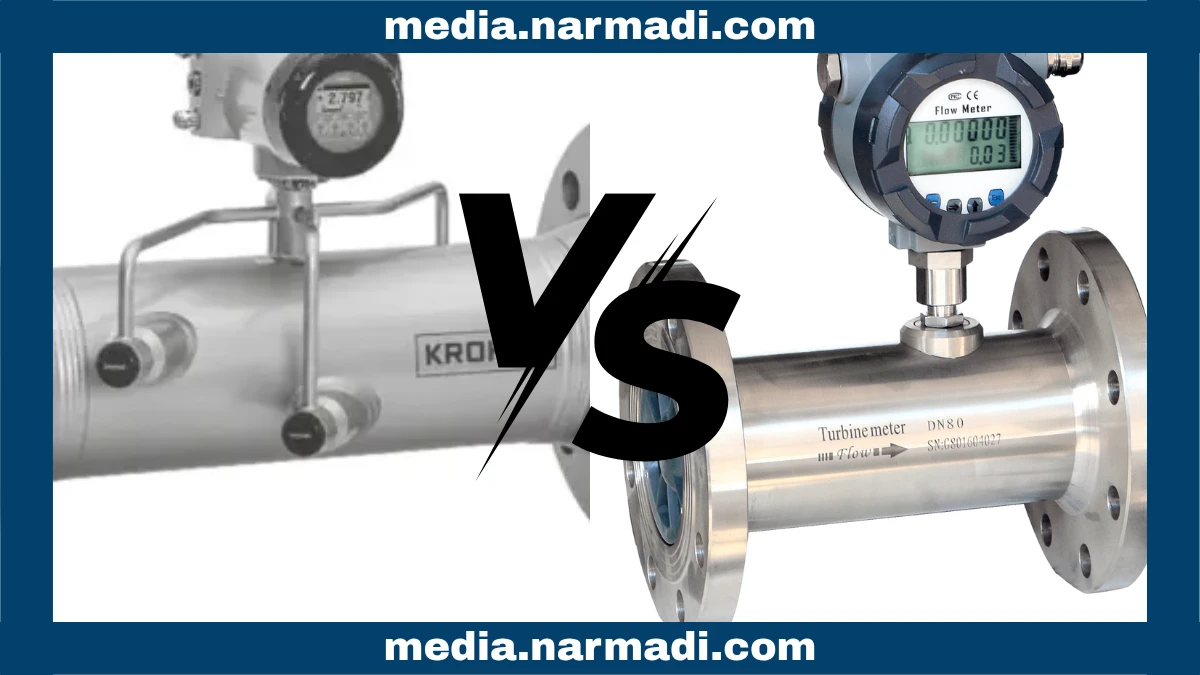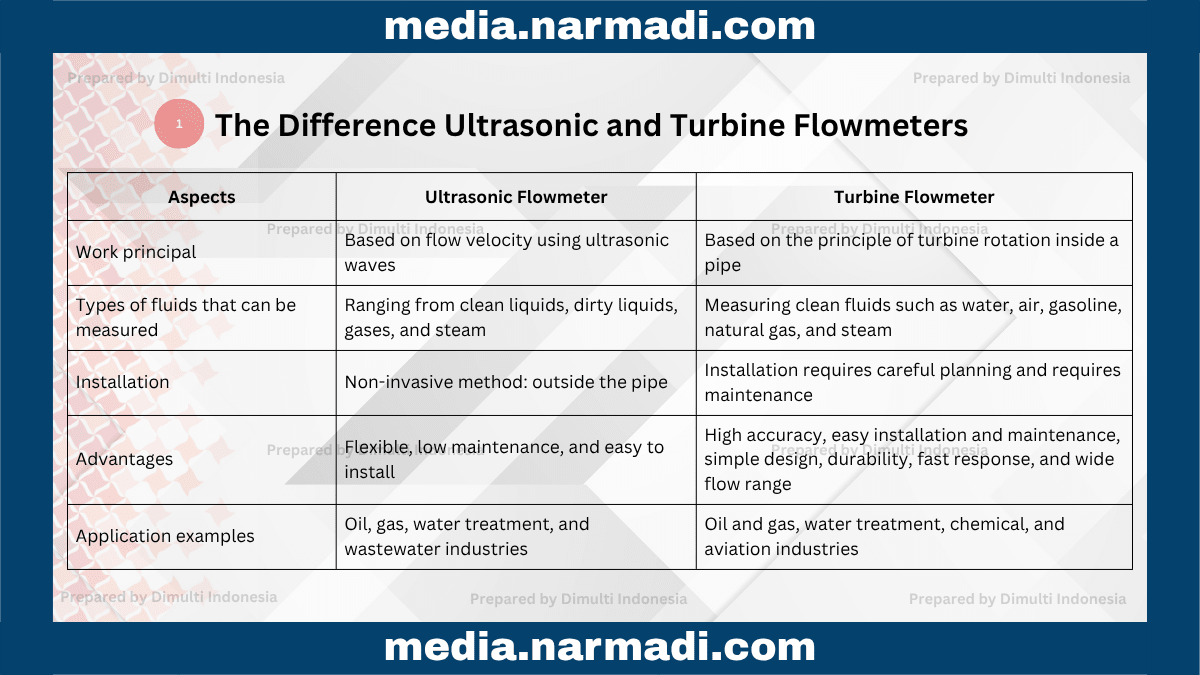Flowmeters are the key to measuring fluid flow in piping systems or open channels. Although all types of flowmeters allow you to control flow, there are some significant differences between ultrasonic and turbine flowmeters.
The differences between ultrasonic and turbine flowmeters include work principle, types of fluids that can be measured, installation, advantages, and application examples.
This article will explore the key differences between ultrasonic and turbine flowmeters to control flow in several industries.
What is an Ultrasonic Flowmeter?

An ultrasonic flowmeter is a type of flowmeter that determines flow velocity using ultrasonic waves. Flow velocity is measured by the time difference between the sound waves emitted from one sensor to another sensor installed on the pipe.
This type of flowmeter has the advantage of installation flexibility, as it is placed outside the pipe without having to cut the flow path, thus not causing fluid flow resistance. Sectors that use ultrasonic flowmeters are usually the oil, chemical, and energy industries.
What is a Turbine Flowmeter?

A turbine flowmeter is a type of flowmeter that measures the flow rate of liquids or gases using the principle of turbine rotation inside a pipe. It works by measuring the flow rate or volume through the speed of the turbine rotation when the fluid flows.
The advantages of this type of flowmeter are high accuracy, easy installation and maintenance, simple design, durability, and fast response. In addition, it has a wide flow range and is capable of operating at various temperatures and pressures.
Sectors that use this flowmeter include the oil and gas, water and wastewater, and food and beverage industries. This device is even commonly used in the chemical industry and the agricultural sector.
The Differences of Ultrasonic and Turbine Flowmeters

Ultrasonic and turbine flowmeters are devices that allow you to have good safety. Here are the differences between them:
Work principle
Ultrasonic flowmeter: Operates based on flow velocity using ultrasonic waves, which measure the time difference between sound waves between two transducers attached to the pipe.
Turbine flowmeter: Operates based on the principle of turbine rotation inside a pipe, which measures the flow rate or volume through the speed of the turbine rotation when the fluid flows.
Types of fluids that can be measured
Ultrasonic flowmeter: Can measure various types of fluids, ranging from clean liquids, dirty liquids, gases, and steam.
Turbine flowmeter: Measuring clean fluids such as water, air, gasoline, natural gas, and steam.
Installation
Ultrasonic flowmeter: Uses a non-invasive method that is installed outside the pipe.
Turbine flowmeter: Installation requires careful planning and requires maintenance and periodic calibration to ensure accuracy.
Advantages
Ultrasonic flowmeter: Flexible, low-maintenance, and easy to install.
Turbine flowmeter: High accuracy, easy installation and maintenance, simple design, durability, fast response, and wide flow range.
Application examples
Ultrasonic flowmeter: Used in oil, gas, water treatment, and wastewater industries.
Turbine flowmeter: Used in the oil and gas, water treatment, chemical, and aviation industries.
That’s the difference between electromagnetic and turbine flowmeters that you can consider when choosing according to your personal needs.
If you want a flexible meter that requires minimal maintenance and is easy to install, an ultrasonic flowmeter is a good choice. However, if you want a simple design, durability, fast response, and a wide flow range, you can choose a turbine flowmeter.